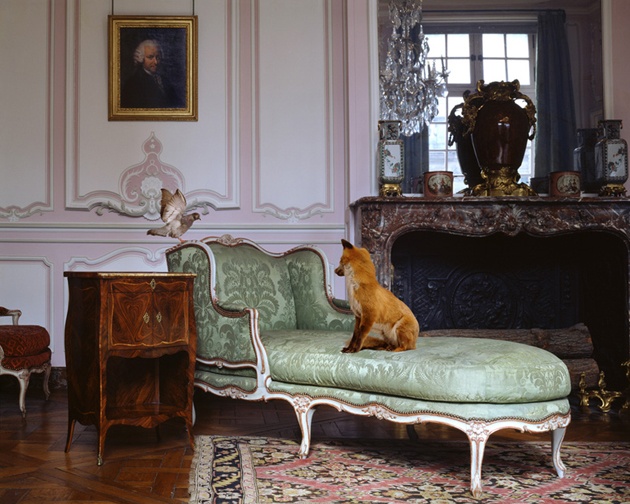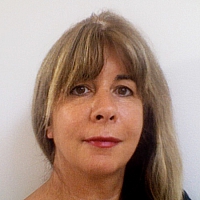
Museo di Fotografia Contemporanea italia Villa Ghirlanda, via Frova 10 Cinisello Balsamo 20092 Milano Italie
"Fables", 18 photographies, 1 video.
The usual aim of the fable is to teach a lesson by drawing attention to animal behaviour and its relationship to human actions and shortcomings. Animals in fables speak metaphorically of human folly, criticizing human nature. Yet it seems that the nature of Karen Knorr’s work has another aim. In Knorr’s “Fables” the animals are not dressed up to resemble humans nor do they illustrate any explicit moral. Liberated, they roam freely in human territory drawing attenton to the unbridged gap between nature and culture. They encroach into the domain of the museum and other cultural sanctuaries which resolutely forbids their entry.
Indifferent, the animal remains “other”, a stranger to the context in which it is inserted. The animal is not the real subject of the work nor is architecture. Karen Knorr’s work shows us the incommensurable distance between two worlds: raw nature on the one hand and on the other the cultural site which allows nature entry only in the form of a representation. Although peaceful, the intrusion of the animals’ presence subverts the institution. The work highlights the “against nature” character of the museum itself.
Karen Knorr’s work assumes this paradox fully and plays with staging the perception of nature within the domain of representation and artifice. The animals displayed are at home here and occupy the rooms freely. In choosing to work with the rooms of museums Karen Knorr acts like the Pied Piper of Hamelin bringing other animals to join the existing animal residents in the Carnavalet Museum, Chambord Castle, Chantilly Castle and Villa Savoye. After this form of cultural tourism, the animals arrive back home to the museum.
The strangeness of this new series of Fables does not reside only in the disjunction between nature and culture. Karen Knorr playfully uses digital technology to mix the digital with the analogical. Analogue photography shot on large format cameras is combined with digital photographs of live and dead animals photographed in museum, zoos and nature reserves.The boundaries of the real are challenged by this hybrid. The spectator’s vision may become troubled by the incongruity of the animals photographed together. The intricate details of a shadow cast on a pillow, the shade of fine plumage, or the contour of a human thigh blur the boundaries between reality and illusion. Beyond the immediate seduction of the photographic images themselves, it is this ambiguity that gives them a particular force.

